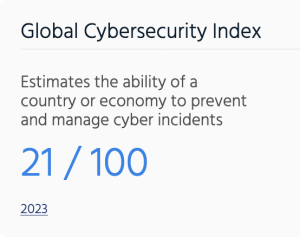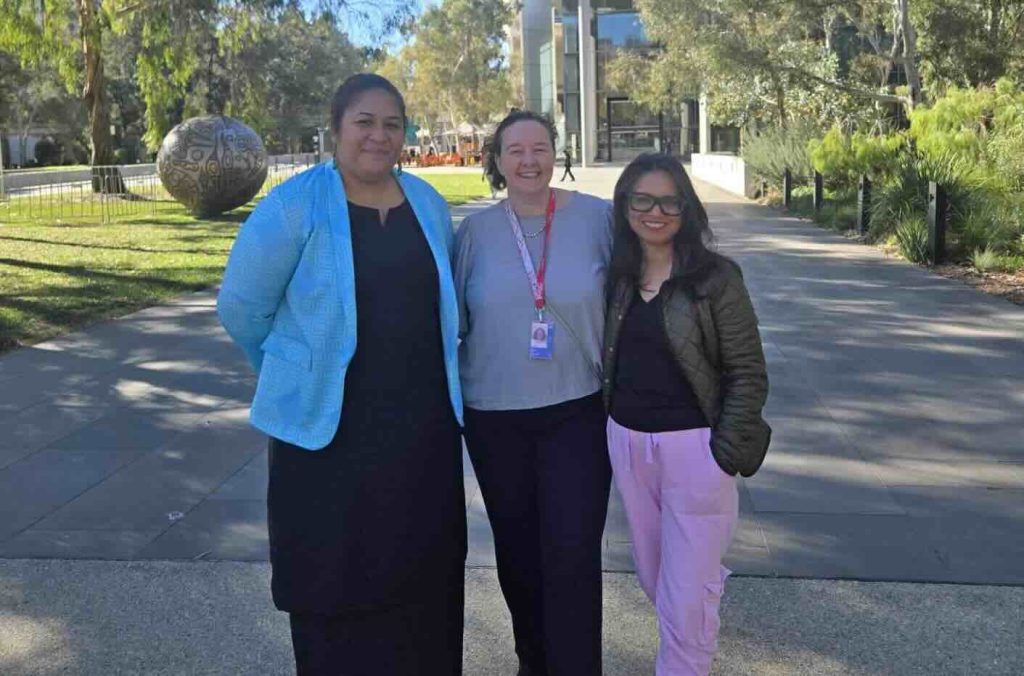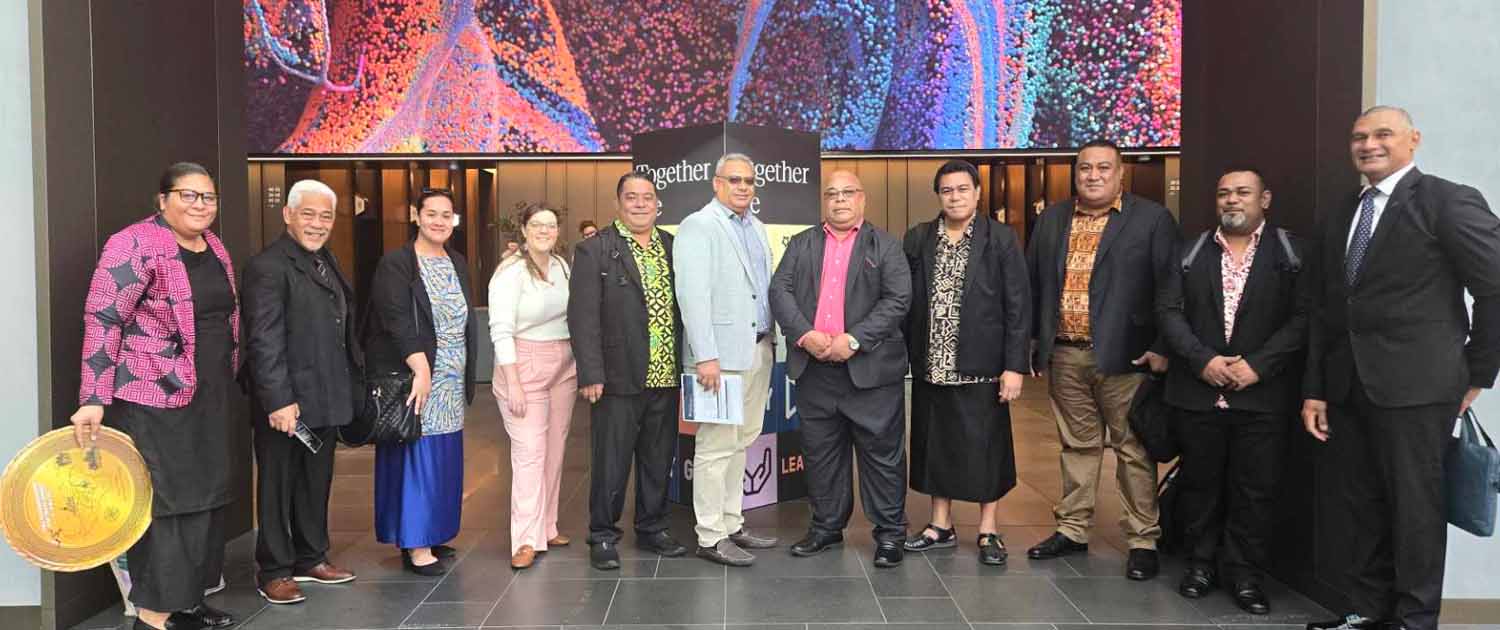- The Tongan Internet community is looking towards other countries to improve its Internet development and resilience in the face of natural and geographic challenges.
- Capacity development is equally important as infrastructure to not only increase resilience but bridge the digital divide.
Last month, I had the privilege of joining a Tongan delegation on a study tour of several key Australian telecommunications and digital infrastructure institutions. This five-day, multi-agency program offered insights into regulatory frameworks, emerging technologies, cybersecurity, and how Australia addresses issues we face in the Pacific.
Tonga faces ongoing challenges in maintaining stable, secure Internet access, especially in the aftermath of natural disasters like the Hunga Tonga–Hunga Ha’apai eruption and tsunami. These events reminded us how crucial telecommunications are for coordination, emergency response, and maintaining basic services. But resilience in connectivity isn’t just about cables and satellites—it’s about people, governance, security, and real-time decision-making.
We need solutions that strengthen infrastructure and prepare our people to operate, govern, and adapt to digital systems under pressure.
Figure 1 — The Pulse Internet Resilience Index provides a holistic measurement of the strengths and weaknesses of a country’s Internet infrastructure, performance, security, and market readiness. Source: Pulse.
Smart Spectrum Management
One major highlight was the Australian Communications and Media Authority (ACMA) presentation of Australia’s Five-Year Spectrum Outlook (FYSO). This document doesn’t just allocate frequency—it aligns the nation’s connectivity roadmap with long-term health, education, agriculture, and defense goals.
For Tonga, this underscores the need for a national spectrum strategy that is both technical and developmental.
Bridging the Connectivity Gap with Innovation
At NBN Co and Telstra, the delegation explored how hybrid connectivity models, particularly Starlink and fixed wireless, are helping reach Australia’s most remote areas. These models could transform connectivity in Tonga’s outer islands, where traditional infrastructure is either too expensive or fragile.
Tonga is already taking meaningful steps in this space, such as launching a national rollout of school-based digital literacy programs and expanding mobile broadband. But to my point before, infrastructure alone isn’t enough. We need to bridge the digital divide by:
- Raising public awareness on how to use these technologies
- Training local communities
- Ensuring inclusive access, especially for women and rural populations
This trip reaffirmed that access must come with education. Our small-scale community outreach under Tonga Women in ICT (TWICT) is one example. However, the country needs a coordinated national push across agencies and sectors to scale this work.
Consumer Protection and Scam Prevention
Australia’s consumer watchdog, the ACCC, and the Telecommunications Industry Ombudsman (TIO) emphasized the need for active consumer education, transparent complaint channels, and whole-of-sector responsibility in tackling scams and service issues.
Tonga must strengthen its regulatory voice to protect digital rights and build public trust in emerging technologies. In one recent TWICT initiative, we ran a workshop where rural youth reported multiple cases of phishing scams disguised as job offers and fake online vendors. But there is currently no clear path for recourse. This must change.
Cybersecurity: A Shared Responsibility
Meeting with the Australian Cyber Security Centre (ACSC) and Home Affairs – Critical Infrastructure Policy Division highlighted one truth: cybersecurity is no longer just an IT issue; it’s national security, economic stability, and community safety wrapped into one.

Establishing Tonga’s National Computer Emergency Response Team (CERT Tonga) was a critical step forward, providing national coordination and early warning systems for threats.
TWICT complements this work by running community awareness programs, focusing especially on women, youth, and first-time smartphone users. We stress simple habits such as using two-factor authentication, strong passwords, and critical thinking about online information. The challenge now is to institutionalize this education.
Connecting with Women in ICT (Canberra)
Engaging with Women in ICT (Canberra), a group of women trailblazing in Australia’s digital sector, was a decisive and personal moment for me. Our conversation confirmed that gender inclusion is critical to national digital resilience.
We discussed shared challenges and strategies around:
- Growing female participation in tech through STEM pathways
- Increasing mentorship and visibility of women in ICT leadership
- Collaborating across borders to strengthen networks and skills
The discussion reaffirmed that empowering women in ICT isn’t just a local priority—it’s a global mission. Australia’s practical approaches—like industry partnerships and visible role models—are lessons we can adapt for Tonga.

Moving Forward: Tonga’s Next Digital Steps
This tour was more than a learning trip—it was a challenge to act. Tonga must now:
- Develop a national spectrum strategy aligned with future needs
- Strengthen digital policy and consumer protection frameworks
- Expand cyber safety education and digital literacy across communities
- Empower women and underrepresented groups at every level of ICT
- Develop a hybrid connectivity strategy (fiber + satellite)
- Create consumer protection frameworks for the digital era
- Scale digital literacy and cybersecurity training
Mālō ‘aupito to the Australian Department of Foreign Affairs and Trade for enabling this critical exchange. Real resilience starts with people sharing, adapting, and growing together. TWICT stands ready to keep building Tonga’s digital future, one connection at a time.
Selu Kauvaka is President of Tonga Women in ICT (TWICT).
The views expressed by the authors of this blog are their own and do not necessarily reflect the views of the Internet Society.


